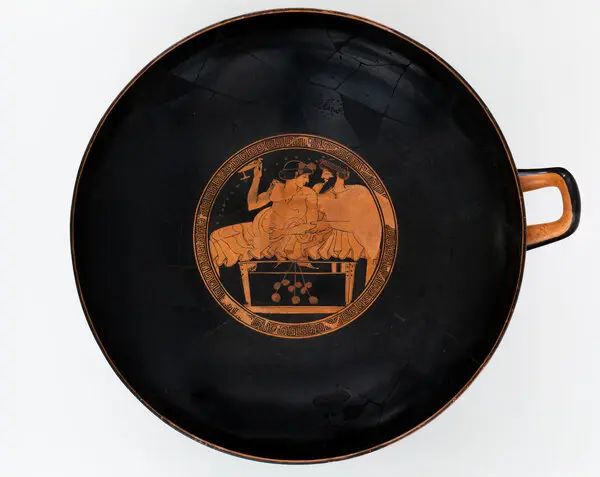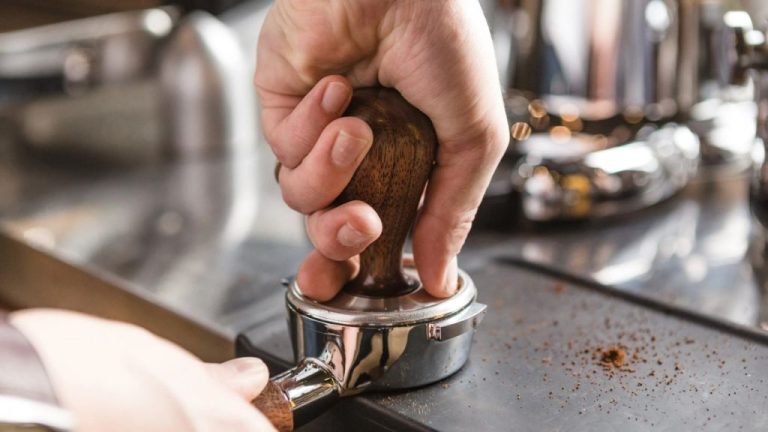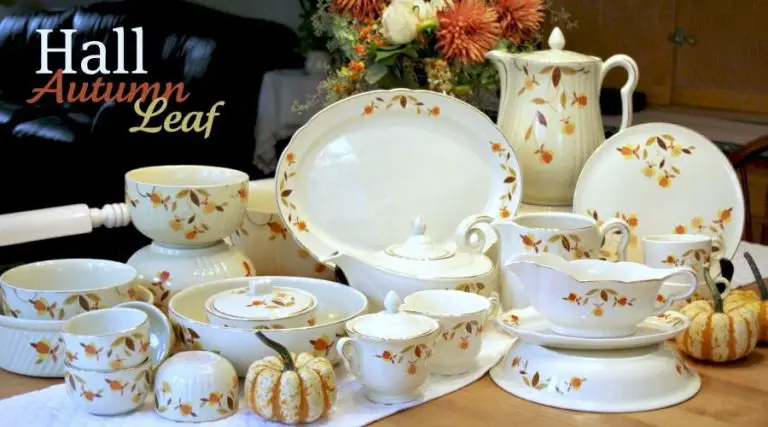What Clay Is Bakeable?
What is Clay?
Clay is a fine-grained natural rock or soil material containing minerals that exhibits plasticity and hardens when fired or dried. The primary clay minerals include kaolinite, montmorillonite-smectite, illite, and chlorite. Clays develop plasticity when mixed with water, due to the physicochemical interactions between water molecules and crystalline clay surfaces. This allows clays to be shaped or molded when wet, and retain their shape when dried or fired.
The chemical and mineral composition gives clay its unique properties. Clays typically form from the chemical weathering and decomposition of rocks over long periods. The small size of the clay particles gives it a large specific surface area that contributes to absorption and adsorption capacity. Clays also exhibit varying degrees of cation exchange capacity based on the specific clay minerals present.
Due to their fine particle size, clays exhibit cohesion and have high dry strength in the unfired state. When fired at high temperatures, clays undergo mineral transformations that give the material additional strength and low permeability. These properties allow clays to be fashioned into pottery, bricks, porcelain, and ceramics.
Types of Clay
There are several main types of clay that are commonly used for baking:
Earthenware Clay
Earthenware is a porous clay that is fired at lower temperatures, typically between 1000°F – 1200°F. It can be left natural reddish-brown or glazed. Earthenware is easier to work with and more forgiving than other clays. It can be used to create items like flower pots, mugs, plates and decorative pieces. Unglazed earthenware will absorb water.
Stoneware Clay
Stoneware clay is dense, non-porous and vitrified (glass-like) when fired between 2200°F – 2400°F. The higher firing temperature makes it more durable and water-resistant compared to earthenware. Common uses include crockery, jugs, pots, and tiles that can withstand repeated use. The clay can be left natural or glazed.
Porcelain Clay
Porcelain is a highly refined, white burning clay. It is fired at very high temperatures of over 2400°F, making it strong, translucent and completely non-porous. Porcelain has low plasticity and can be difficult to work with. It is commonly used to create tableware, art pieces, sculptures and dental products.
Terra Cotta Clay
Terra cotta is an unglazed, porous earthenware clay that has a distinct orange-red color after firing. It is resistant to frost damage making it popular for use in pottery and building materials. Terra cotta pots are a common gardening staple. The clay can also be used to make bricks, tiles, and ornamental pieces.
Factors That Make Clay Bakeable
The bakeability of clay is determined by its chemical composition, firing temperature, and mineral content. Clay that is suitable for baking contains the right ratios of silica, alumina, and flux minerals that allow the clay to become hard and durable through firing without melting or deforming.
The silica and alumina in clay provide structural integrity when fired but they also cause the clay to contract excessively. Flux minerals like feldspar lower the vitrification temperature, allowing the clay to harden at lower firing temperatures. Fluxes also promote glass formation within the clay body during firing, counteracting shrinkage.
An appropriate level of fluxes causes the clay to vitrify (become glass-like) when fired at high temperatures, making it dense, impervious to water, and very strong. Too much flux can cause over-firing defects. The ideal mineral composition varies based on the type of clay and desired characteristics.
The process of vitrification transforms soft, weak clay into a durable, rock-like material through baking at high temperatures. Clays with the right balance of minerals and low impurities can fully vitrify at an appropriate temperature. This makes the clay body non-porous, hard, and able to withstand thousands of years of weathering.
Earthenware Clay
Earthenware clay is one of the most common types of clay that is bakeable. It has a lower firing temperature than other clays, typically between 1700°F and 2100°F. The lower temperature means it requires less fuel to fire earthenware in a kiln, making it a more economical option.
Due to the lower firing temperature, earthenware clay has a more porous structure after being baked. This gives it the ability to absorb water, which can be useful for plant pots and other items meant to retain moisture. However, the porous nature also means earthenware is less strong and durable than stoneware or porcelain.
The softness and porousness of earthenware gives it a warmer, more natural aesthetic compared to smoother clays. Glazes are often used on earthenware pieces to make them less porous and to add decorative colors and effects. Overall, earthenware clay offers an affordable and accessible option for creating handmade, bakeable clay crafts and pottery.
Stoneware Clay
Stoneware clay is one of the most popular types of clay for baking due to its durability and lower porosity. It is fired at an extremely high temperature, typically between 2200°F and 2400°F. This high firing temperature vitrifies the clay, fusing it into a non-porous material that is waterproof and strong. The high heat creates a glassy coating on the surface of the clay.
Because stoneware clay is fired hotter than earthenware clay, it has very low porosity, making it less prone to absorbing water and bacteria. Items made from stoneware clay can be used to hold liquids without leaking. It also has high mechanical strength and resistance to thermal shock. This type of clay is commonly used to create dishes, mugs, vases and other items expected to hold up well to daily use.
The color of finished stoneware pieces fired at these high temperatures tends to be gray, white or brown. Special minerals can be added to the clay base to create darker colors like blue, green or black. When polished, fired stoneware clay achieves a smooth, glassy texture. This non-porous nature allows minimal water absorption, enabling the pieces to be used in wet environments.
Porcelain Clay
Porcelain clay is a type of ceramic clay that is widely recognized for its strength, translucence, and beauty once fired at extremely high temperatures. It is highly desired by ceramic artists and potters around the world for its refined white color and smooth, glass-like surface.
Porcelain clay is made from kaolin clay combined with feldspar and quartz. Kaolin clay gives porcelain its white color and plasticity while feldspar acts as a flux to lower the high firing temperature. Quartz adds strength and structure. The clay mixture is fired between 2,200°F and 2,500°F, much higher than other clays.
The result of such high firing temperatures is a non-porous, vitrified material that is highly impervious to water and resistant to staining. In fact, porcelain clay is the strongest, most durable ceramic material available. It has very high mechanical strength and can be glazed or left unglazed.
Because of its fine white color, translucence, and extremely smooth surface when glazed, porcelain has long been valued for making chinaware, figurines, sculptures, and other art ware. It is also popular for architectural tiles and electrical insulators due to its high resistance to moisture and electricity.
Terra Cotta Clay
Terra cotta clay is a type of natural clay that has a distinct reddish color. It is an iron-rich clay that is commonly found in many locations around the world. Terra cotta clay is known for its low firing temperature, making it easier to work with for baking and firing pottery and ceramic items.
The reddish hue of terra cotta clay comes from the high iron oxide content. When fired at low temperatures ranging from 1,800 to 2,000 degrees Fahrenheit, the iron oxide remains in the chemical composition, allowing the vibrant reddish-orange color to emerge. This makes terra cotta items distinguishable from other types of baked clay.
Due to the low firing temperature requirements, terra cotta clay is easier to bake than other clays. It can be fired in a regular kitchen oven in some cases, unlike porcelain or stoneware clays that require very high kiln temperatures exceeding 2,200°F. The lower temperature makes terra cotta clay more accessible and economical for hobbyists and artists who want to work with clay.
Terra cotta has been used for thousands of years to create pottery, sculptures, tiles, vases, and other decorative and functional baked clay items. The longevity and durability of terra cotta clay has allowed many ancient artifacts to withstand the test of time. Modern terra cotta continues to be popular for its vibrant colored finishes and rustic artisanal qualities.
Preparing Clay for Baking
Properly preparing clay before baking is a crucial step to ensure the finished piece holds its shape and has minimal cracking or defects. Clay preparation typically involves wedging, kneading, and/or slip casting depending on the type of clay and desired finished product.
Kneading and wedging are techniques to remove air bubbles from the clay. Kneading involves pressing and folding the clay over itself repeatedly to force out trapped air pockets. Wedging is a process of cutting the clay in half, pressing it back together and reforming it into a ball shape to blend the clay and remove air bubbles. Well wedged or kneaded clay will have an even consistency with no cracks or holes.
Slip casting involves pouring liquid clay slip into a plaster mold then pouring out the excess once the layer along the mold walls has hardened. The remaining clay takes the shape of the mold as it dries. Slip casting allows intricate shapes and thin walls difficult to achieve with hand-building methods.
Firing temperature is another key consideration when preparing clay. Earthenware fires at lower temperatures up to 2,200°F while stoneware requires 2,200-2,400°F, and porcelain needs the highest heat around 2,400-2,600°F. Clay can crack or under-fire if not heated to its ideal temperature range. Carefully following manufacturer specifications ensures proper firing.
Taking the time to correctly knead, wedge, and slip cast clay produces high quality pieces ready for the baking process. Matching the clay type with the appropriate firing temperature results in hard, durable finished products.
Baking Process
Once clay is molded into its desired shape and allowed to dry to avoid cracking, it’s ready to be fired in a kiln. There are several types of kilns that are commonly used for baking clay:
Electric Kilns
Electric kilns heat the clay using heating elements and require access to electricity. They allow precise control over temperature and are used for firing ceramics. Electric kilns are available in many sizes and are a common choice for home studios and small operations.
Gas Kilns
Gas kilns use natural gas or propane to generate heat and flame, allowing for efficient high temperatures required for firing stoneware and porcelain. Gas kilns allow fast heat up times and are known for providing atmospheric effects with real fire.
Wood-Fired Kilns
Traditional wood-fired kilns use wood as fuel for firing. Wood kilns provide atmospheric effects from wood ash and flame that create unique character and finishes in the clay. They require skilled firing techniques to control the temperature and environment.
The clay must be heated according to a specific firing schedule that gradually raises the temperature to avoid cracking and optimize the physical properties of the clay body. Typical electric kiln firing schedules take 8-12 hours to complete for most clays and forms. The kiln is then cooled gradually over another 8-12 hours before the finished pieces can be removed.
Finished Baked Clay Products
Clay that has been properly prepared and fired at high temperatures can produce a variety of durable finished products. Some of the most common baked clay items include:
Tableware
Clay can be shaped into dishes, cups, plates, bowls, and other tableware. When glazed and fired, these pieces become food-safe, durable, and attractive for everyday use. The variations in clay color, glaze choices, and firing temperatures allow artisans to produce unique handmade tableware.
Tiles
Fired clay is an excellent material choice for floor, wall, and counter tiles. Clay tiles come in a vast array of sizes, colors, shapes, and finishes. The durability and water-resistance makes fired clay tiles suitable for bathrooms, kitchens, entryways, patios, and more.
Sculptures
Sculptors often work with clay to shape intricate statues, busts, figurines, and other 3D artwork. When fired, these clay sculptures become permanent. Many cultures around the world have traditions of decorative baked clay sculptures.
Bricks
One of the most common baked clay products is the standard brick, used globally in construction, architecture, and masonry projects. Brickmaking involves extruding clay into molds, then firing the bricks in high-temperature kilns.



